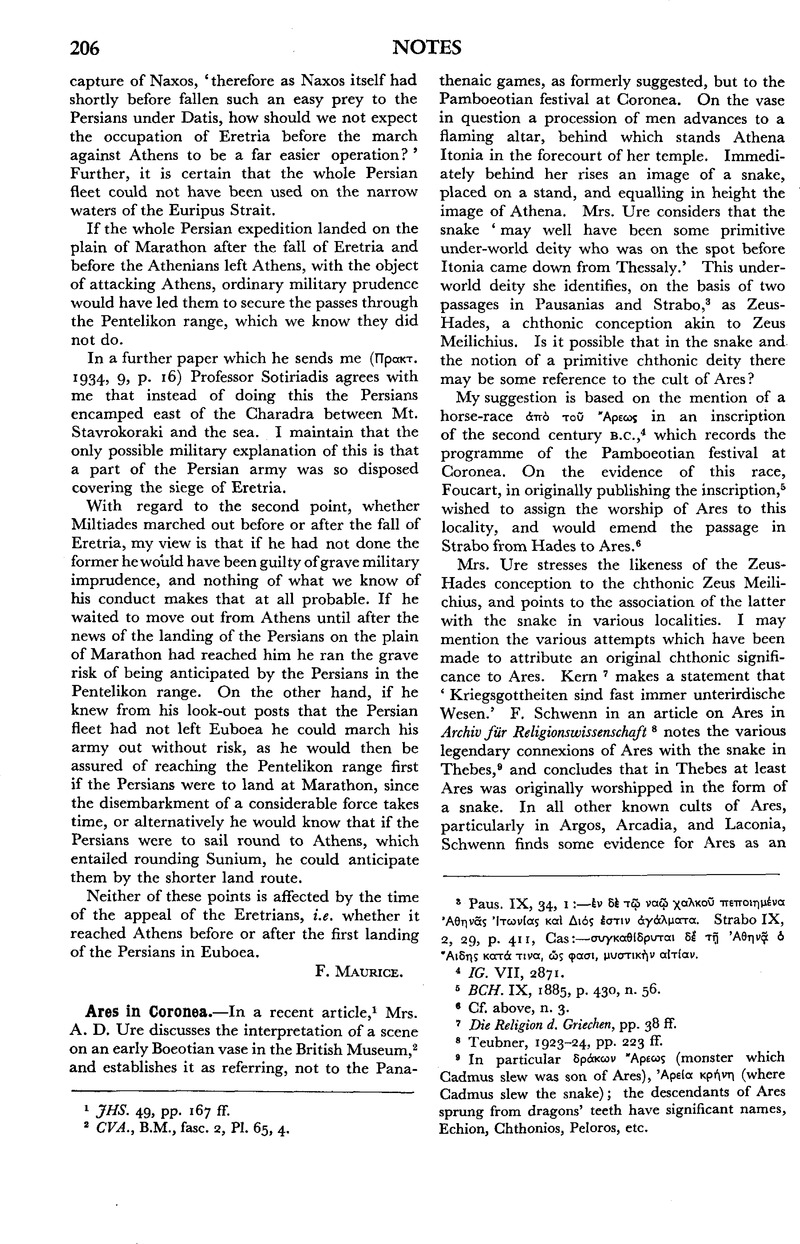No CrossRef data available.
Article contents
Ares in Coronea
Published online by Cambridge University Press: 23 December 2013
Abstract

- Type
- Notes
- Information
- Copyright
- Copyright © The Society for the Promotion of Hellenic Studies 1934
References
page 206 note 1 JHS. 49, pp. 167 ffGoogle Scholar.
page 206 note 2 CVA., B.M., fasc. 2, Pl. 65, 4.
page 206 note 3 Paus. IX, 34, 1:— ![]()
![]() . Strabo IX, 2, 29, p. 411, Cas:—
. Strabo IX, 2, 29, p. 411, Cas:—![]()
![]() .
.
page 206 note 4 IG. VII, 2871.
page 206 note 5 BCH. IX, 1885, p. 430, n. 56.
page 206 note 6 Cf. above, n. 3.
page 206 note 7 Die Religion d. Griechen, pp. 38 ff.
page 206 note 8 Teubner, 1923–24, pp. 223 ff.
page 206 note 9 In particular δράκων Ἄρεως (monster which Cadmus slew was son of Ares), Ἀρεία κρήνη (where Cadmus slew the snake); the descendants of Ares sprung from dragons' teeth have significant names, Echion, Chthonios, Peloros, etc.
page 207 note 1 Glotta, 1921 (11), p. 195Google Scholar. For other references to chthonic significance cf. H. W. Stoll, Über die ursprüngliche Bedeutung des Ares; Decharme, P., Mythologie de la Grèce antique, p. 178 (storm god)Google Scholar; Welcker, , Griechische Götterlehre I, 419Google Scholar; Voig, F. A.Beiträge zur Mythologie des Ares und der Athene (Leip. Stud. IV, pp. 230 ff.Google Scholar, weather god); Gruppe, , Griechische Mythologie, 1379Google Scholar.
page 207 note 2 Cf. Strabo and Paus. passages above, n. 3.
page 207 note 3 Cf. Wissowa, ap. Müller, , Vol. V, 4, Religion and Kultus der Römer, pp. 131 ffGoogle Scholar.


